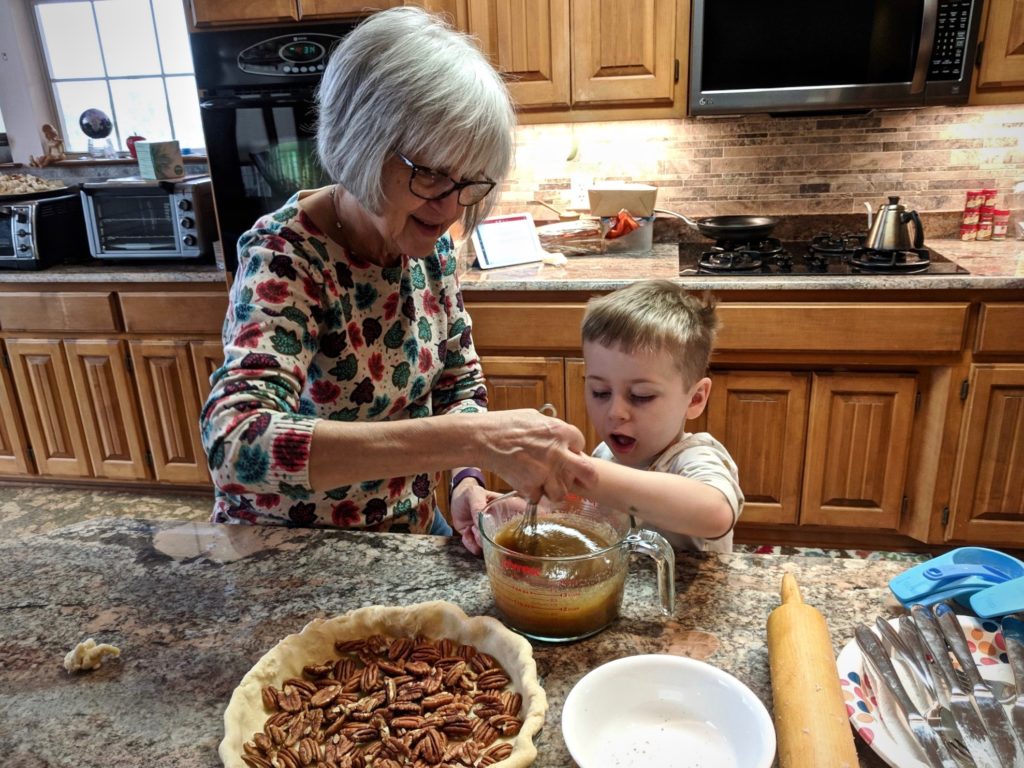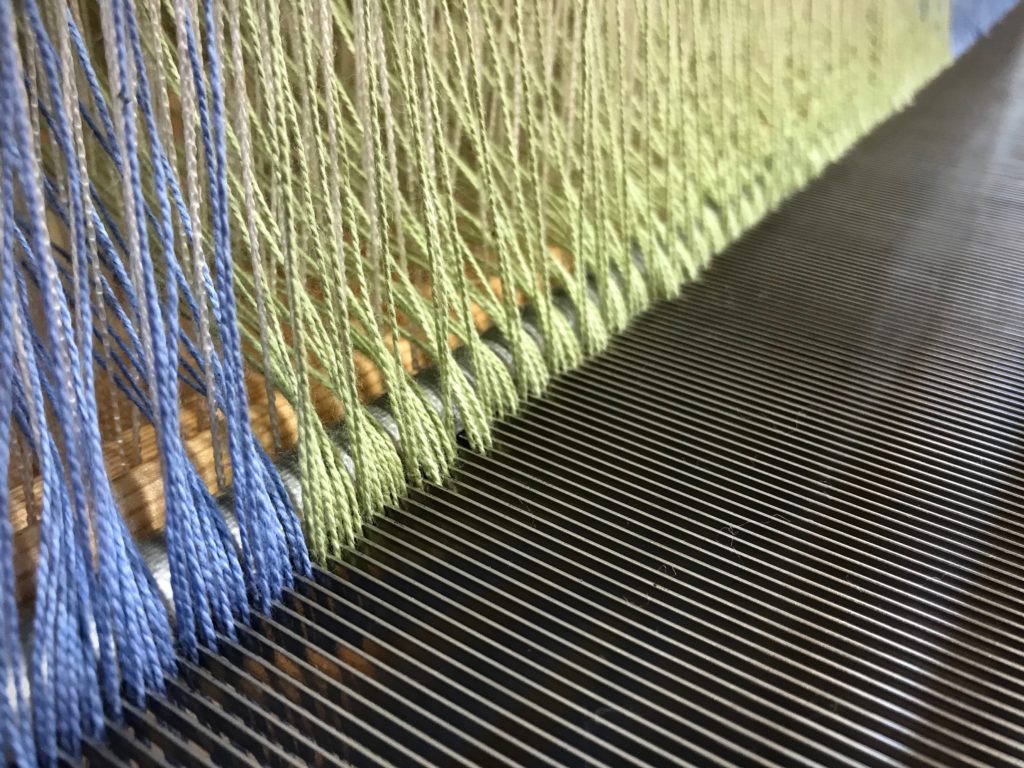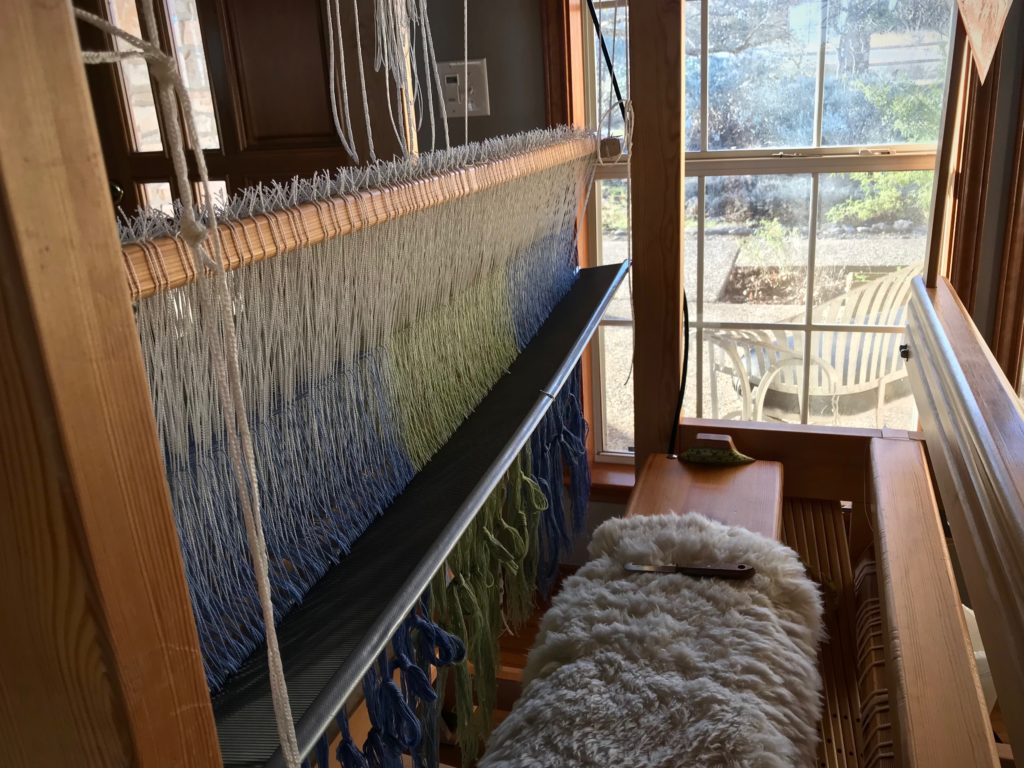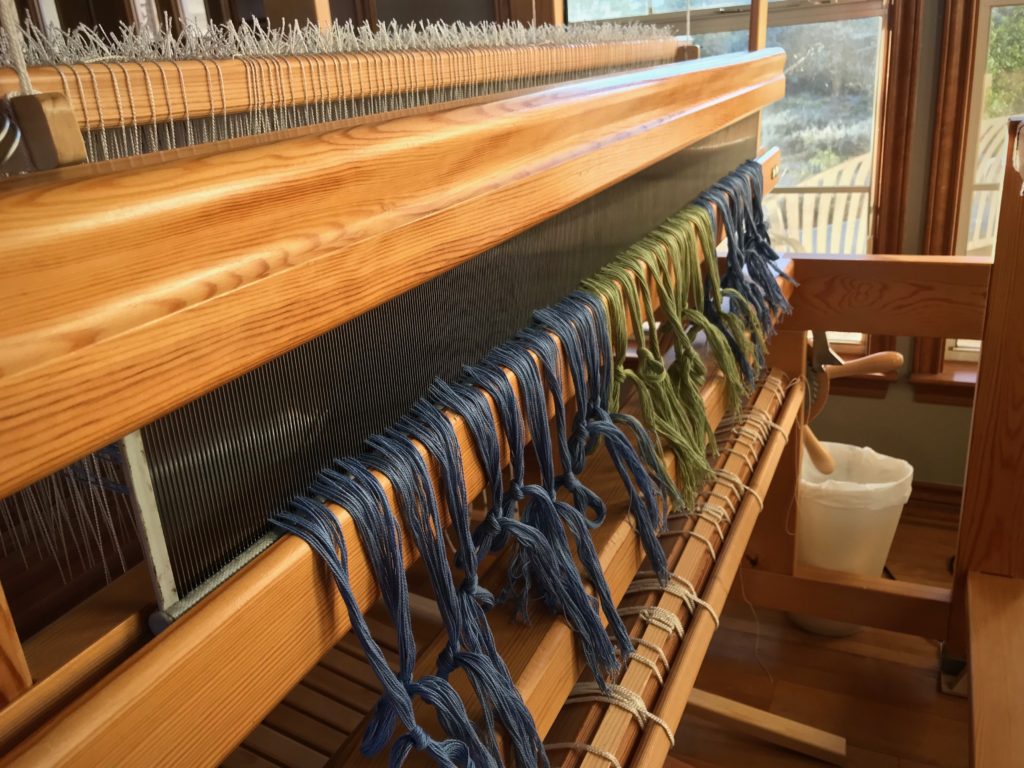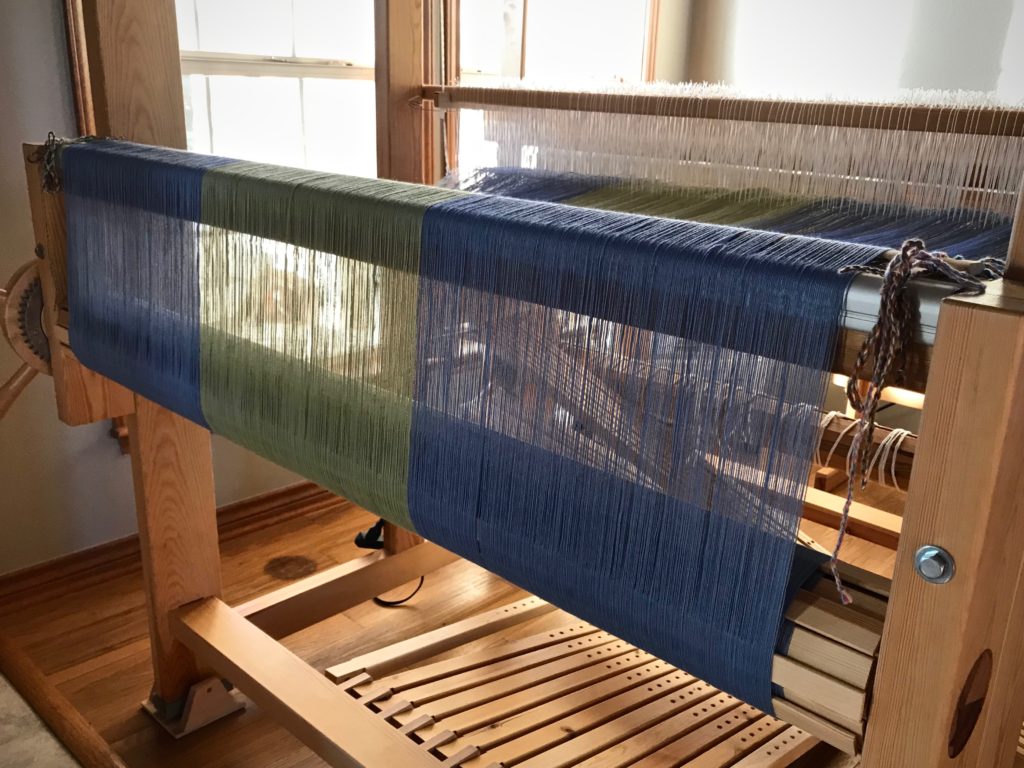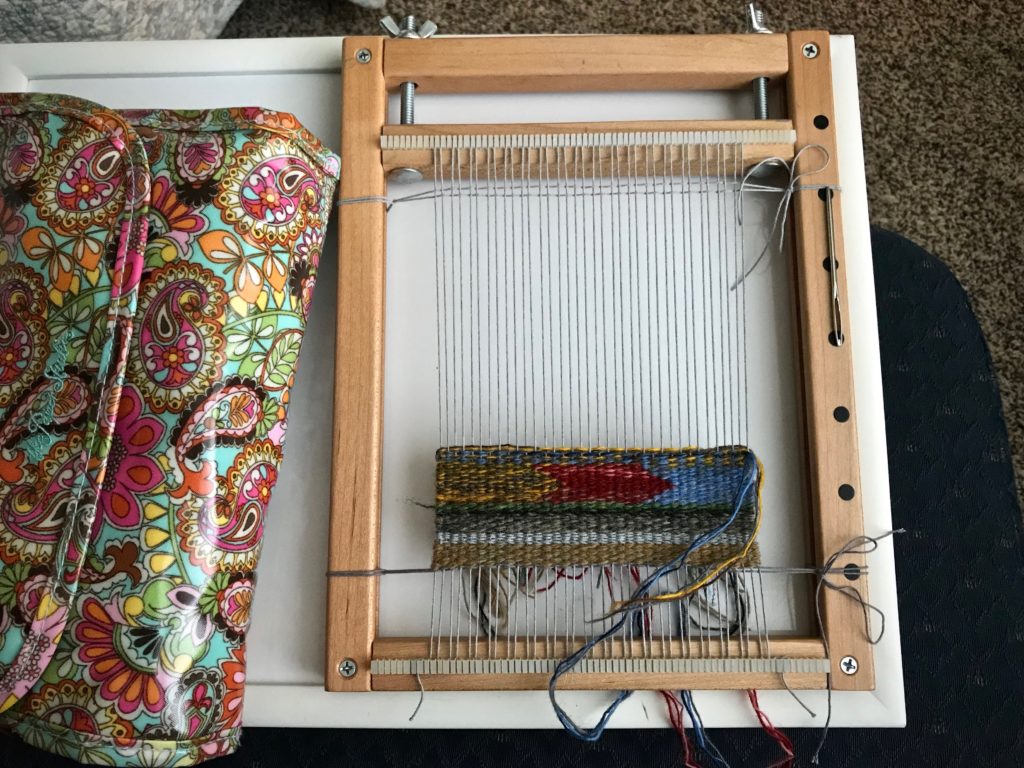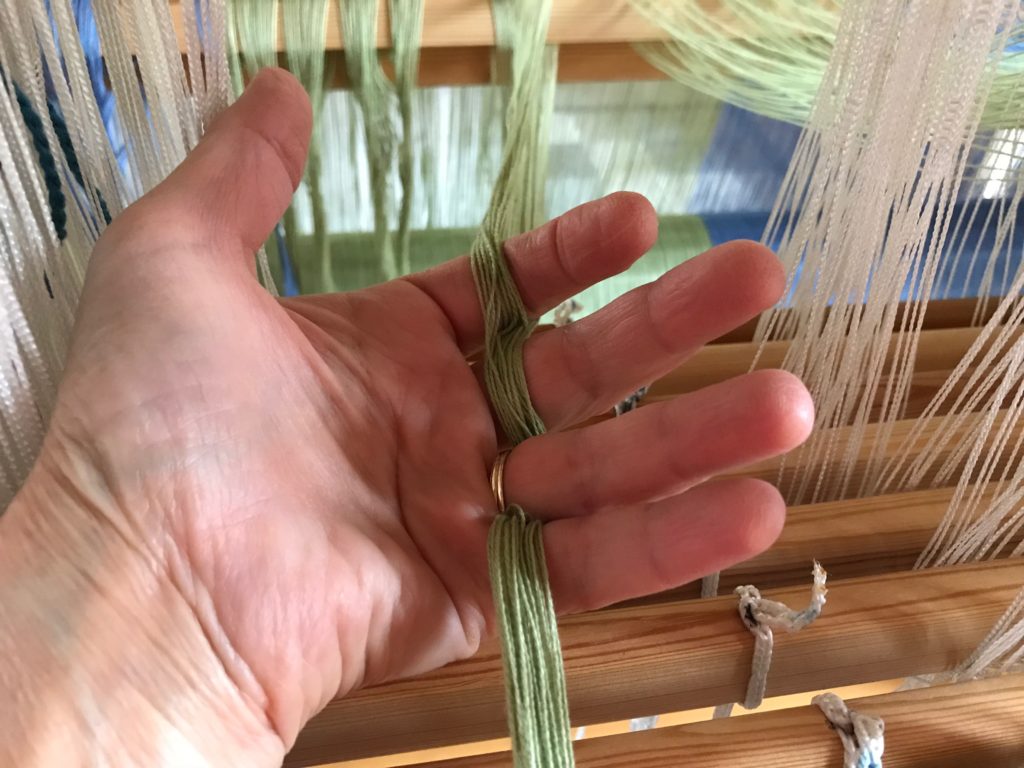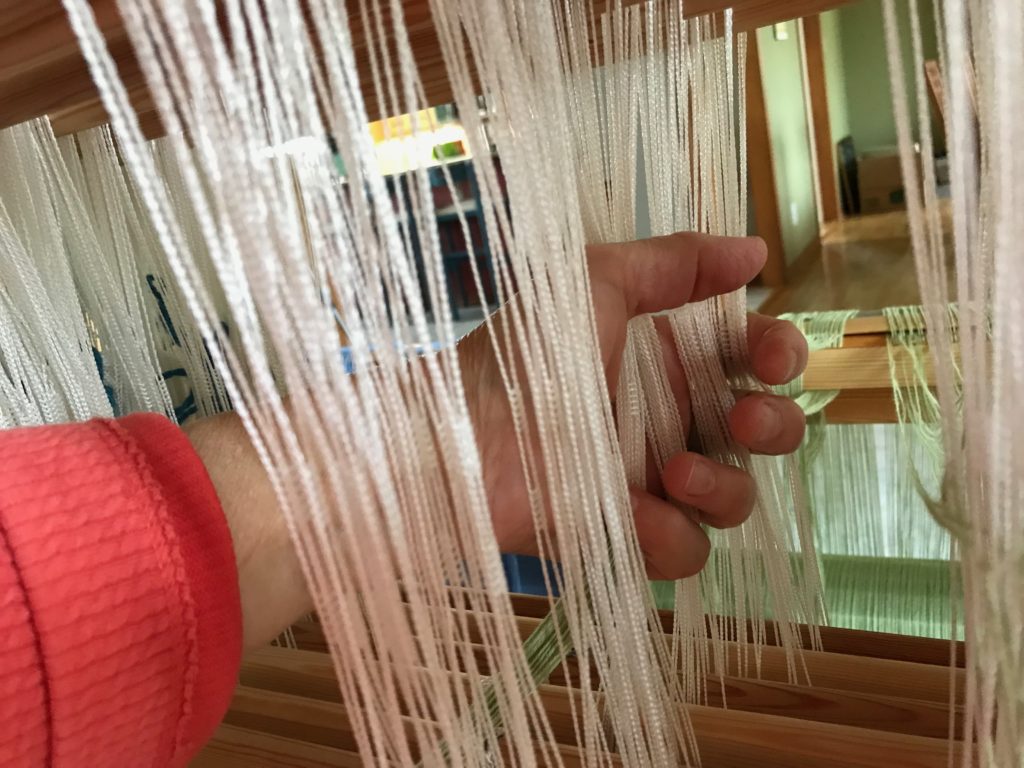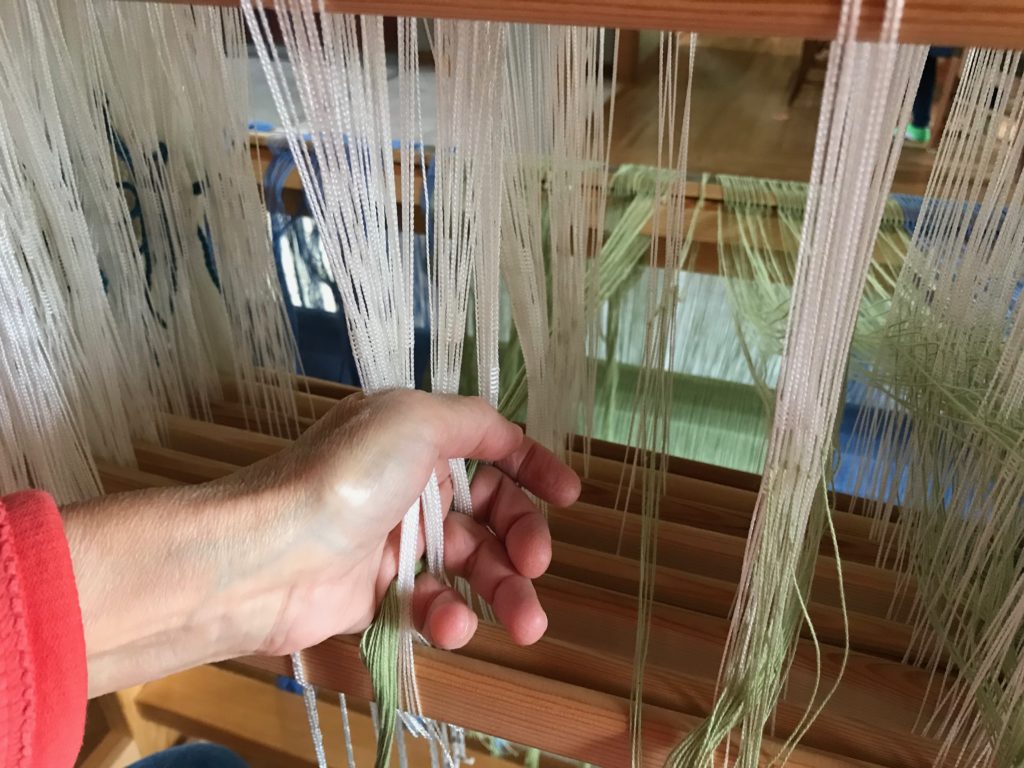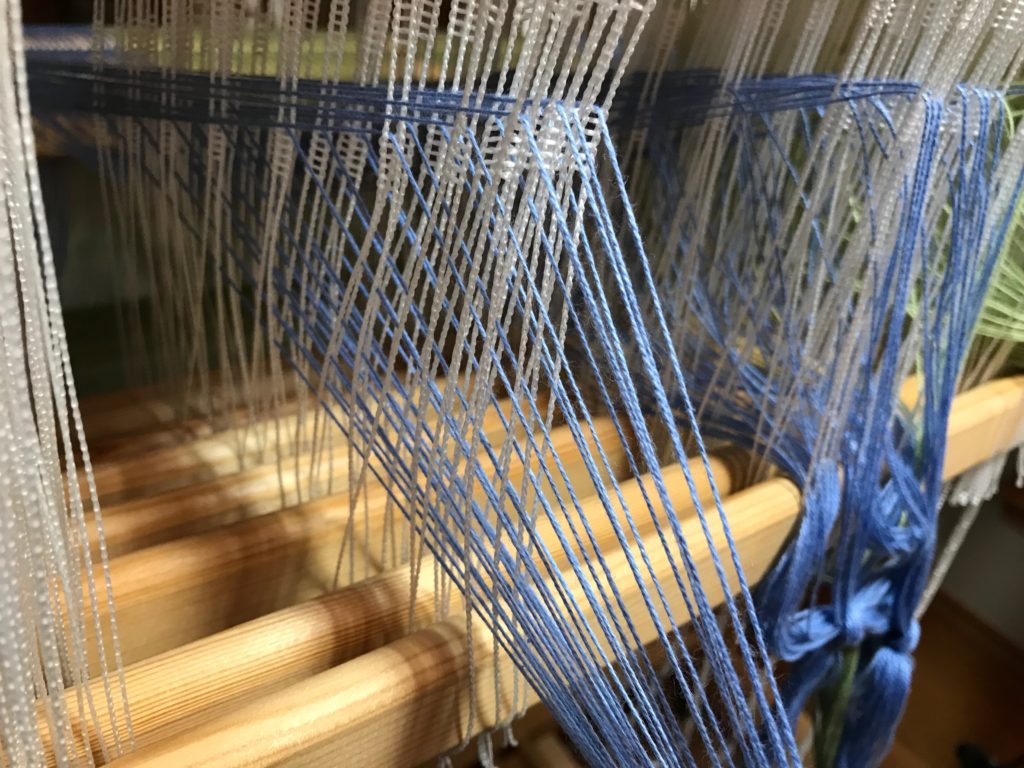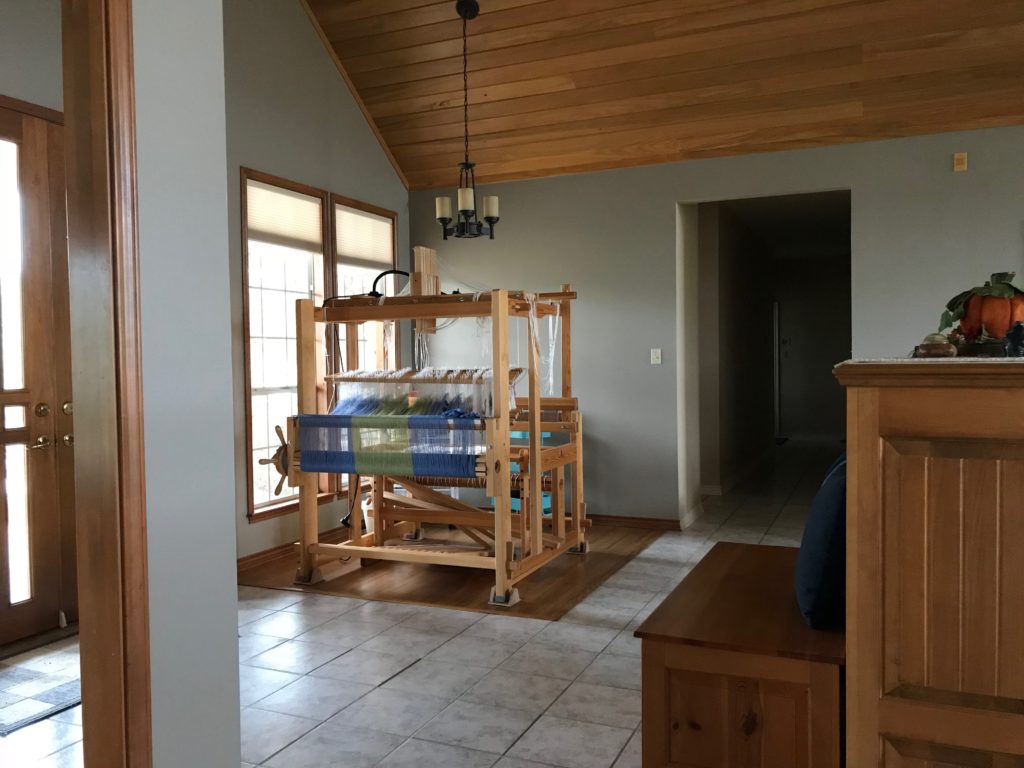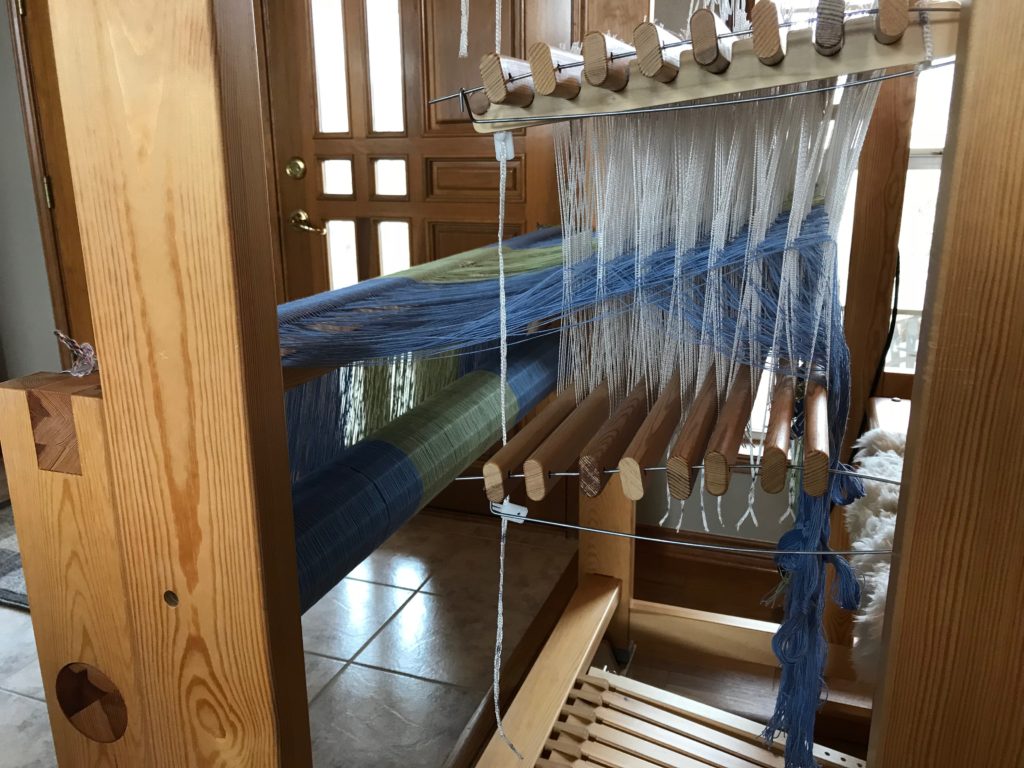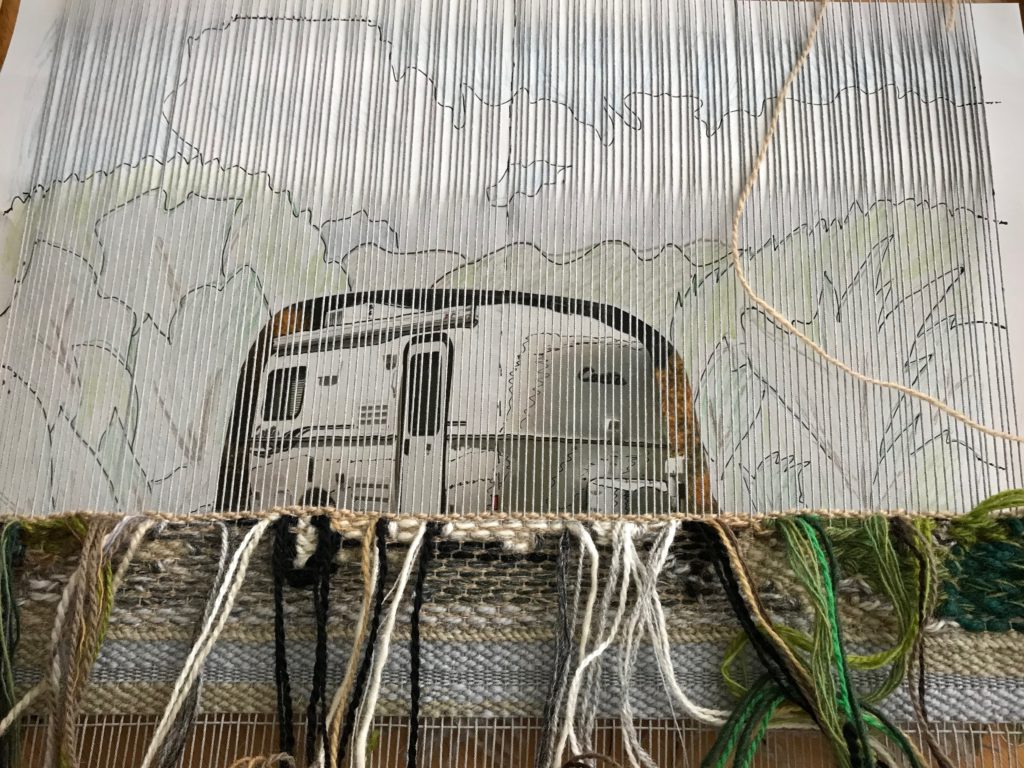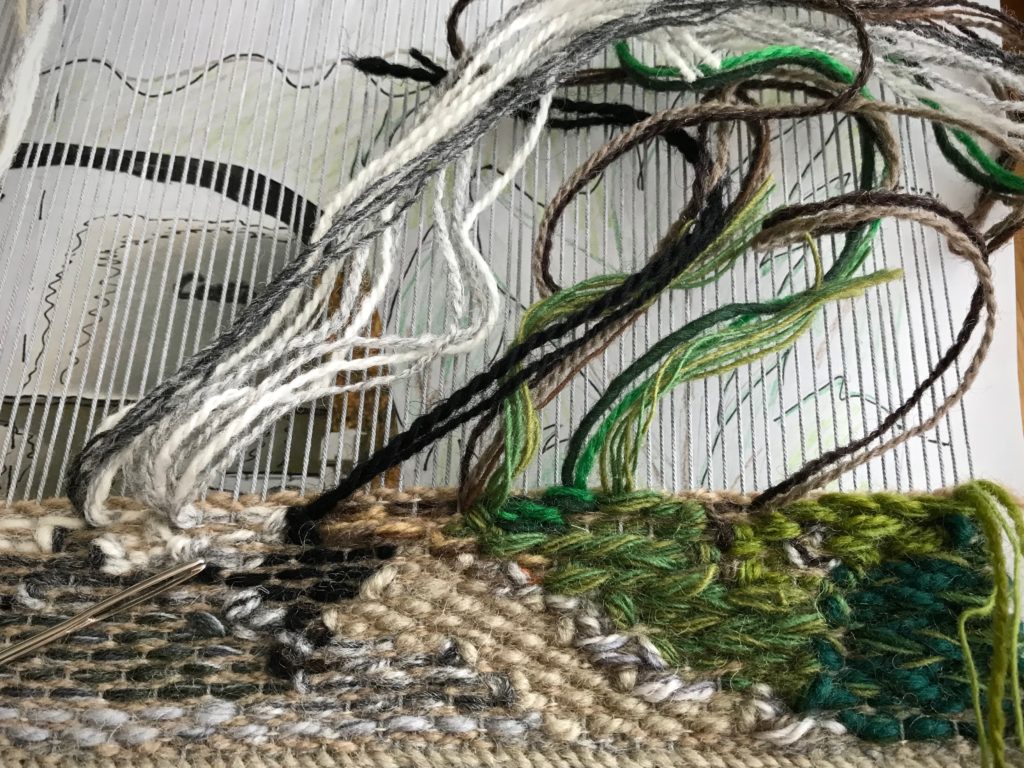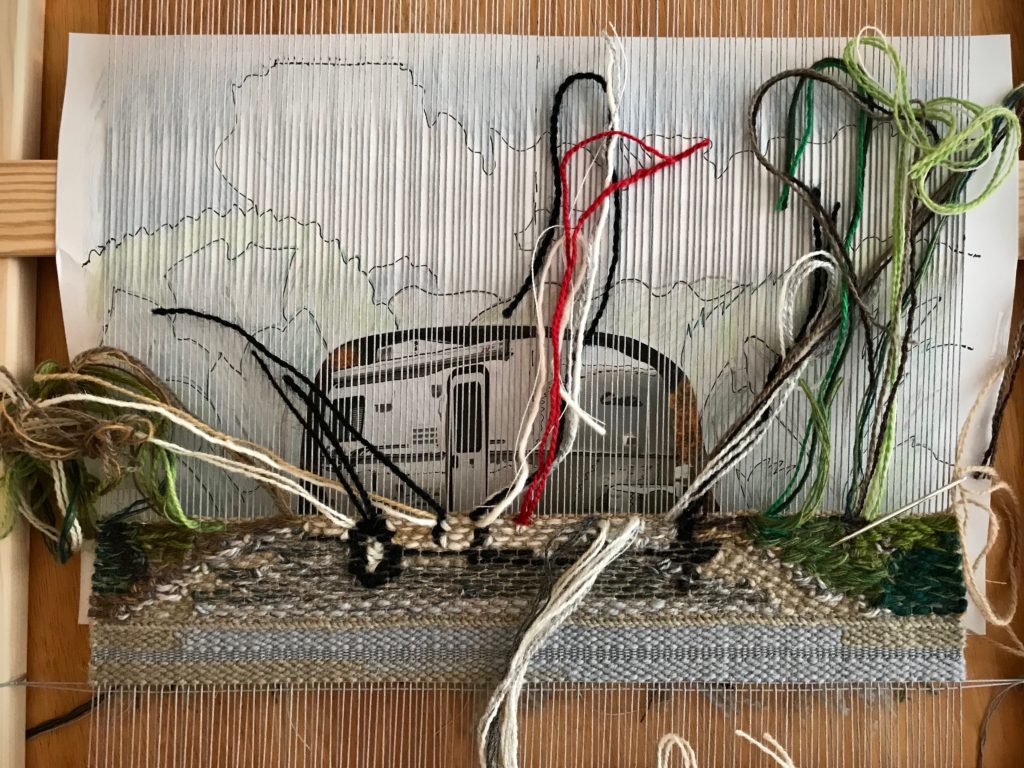Guess what? I added another loom. You might think I already have plenty of looms. This one is a beautiful, well-cared-for 120 cm Glimåkra Standard countermarch loom. It’s the first real step toward another big dream—drawloom weaving. What a pleasant surprise for me to find out that the dear person handing off this loom is one of my blog friends from right here at Warped for Good! And not far from our Texas hill country home. Thank you, friend!
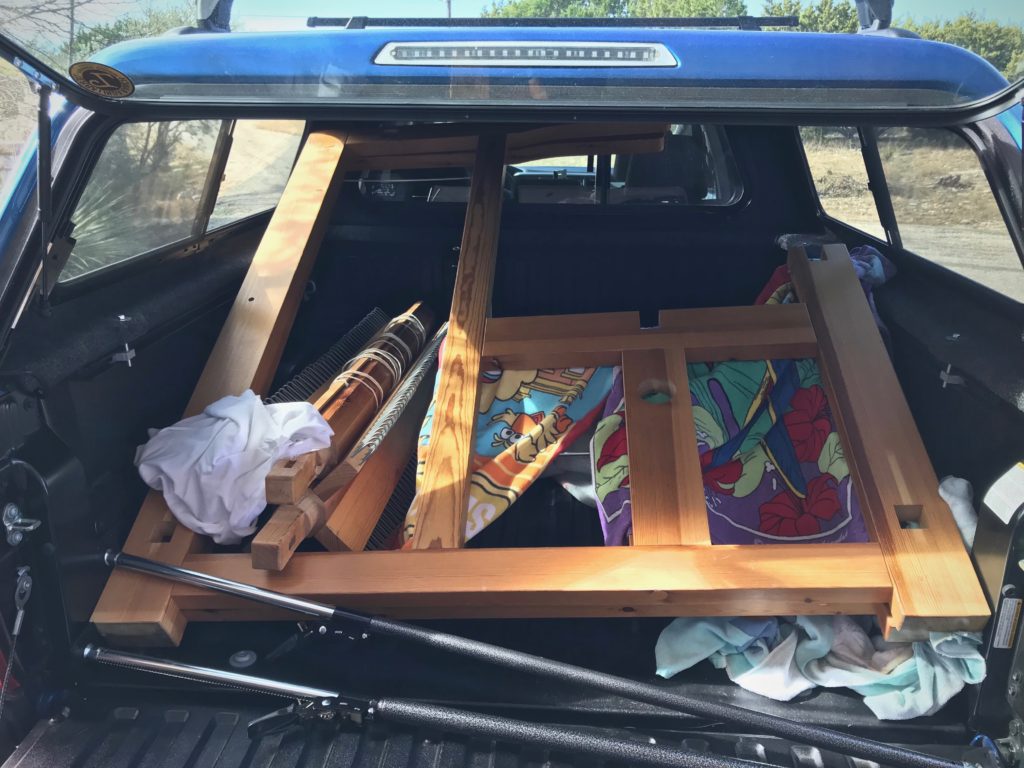
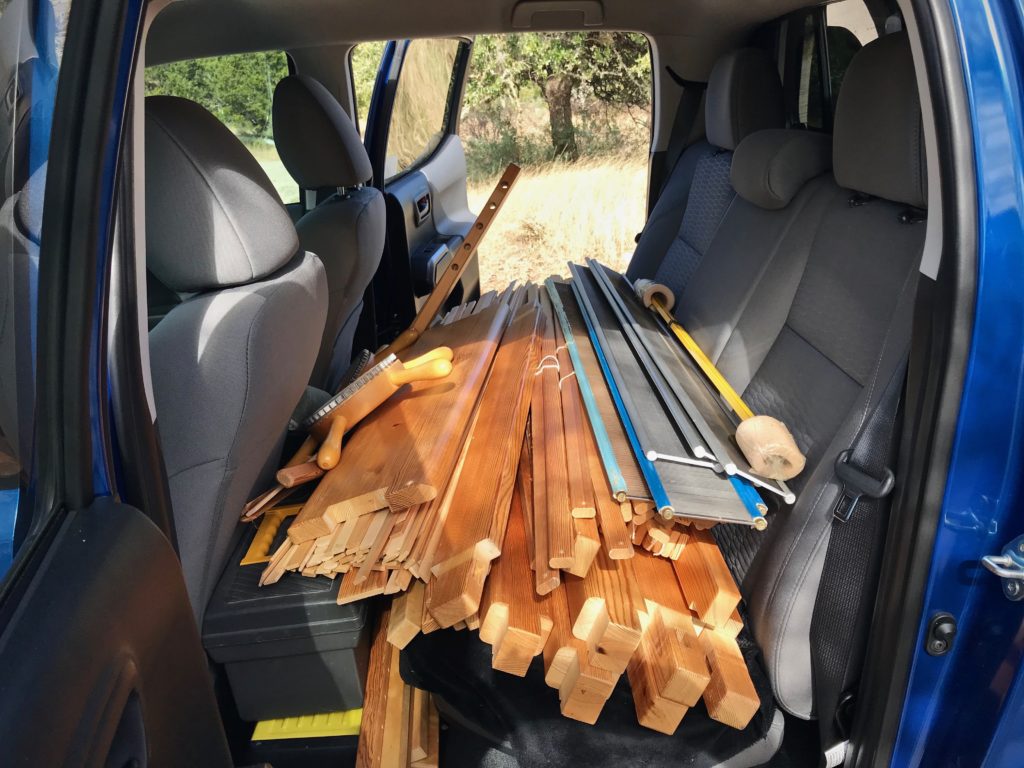
There are a few things to be done before drawloom weaving becomes a reality for me.
- Read, re-read, and review everything I can get my hands on about drawlooms and drawloom weaving, especially Joanne Hall’s new book, Drawloom Weaving, and Becky Ashenden’s DVD, Dress Your Swedish Drawloom.
- Fix up the light-filled room in the hangar (did I tell you we have an airplane hangar on our property?) where there is ample room for the extended-length drawloom.
- Order the drawloom attachment and supplies.
- Move the loom to its special room in the hangar.
- Assemble the drawloom.
In the meantime, I’ll weave a couple projects on this loom while it sits in a prized corner in our home. In our little piece of hill country. (We make our final move there next week!)
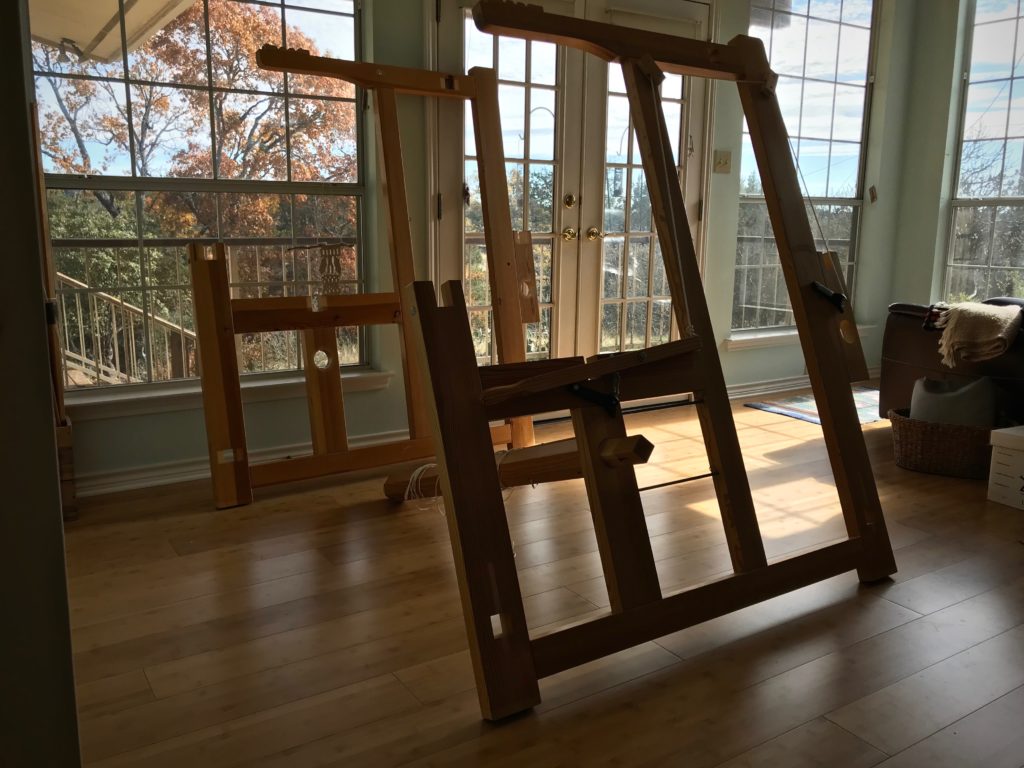
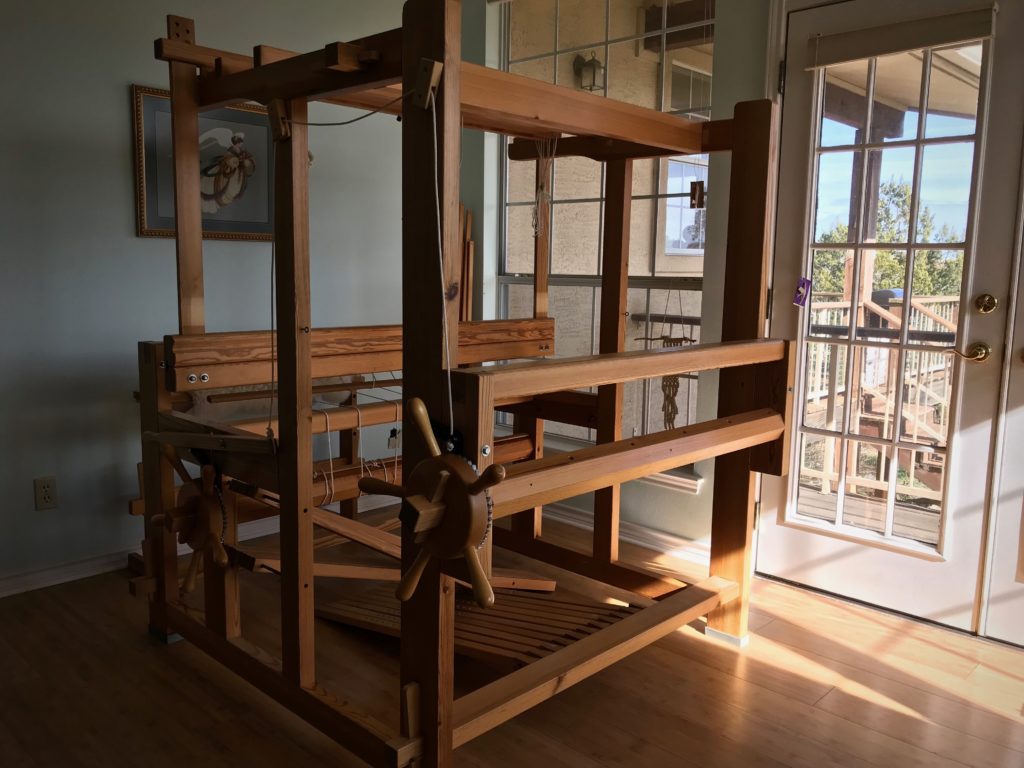
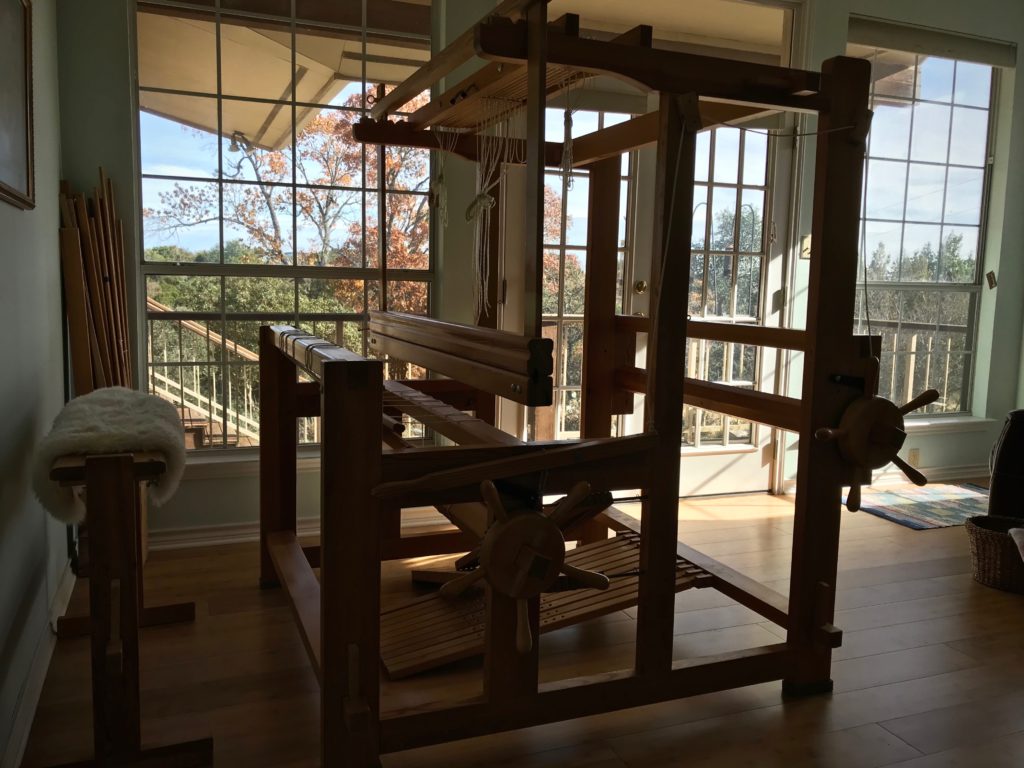
May you take a step closer to your biggest dreams.
With deep gratitude,
Karen

